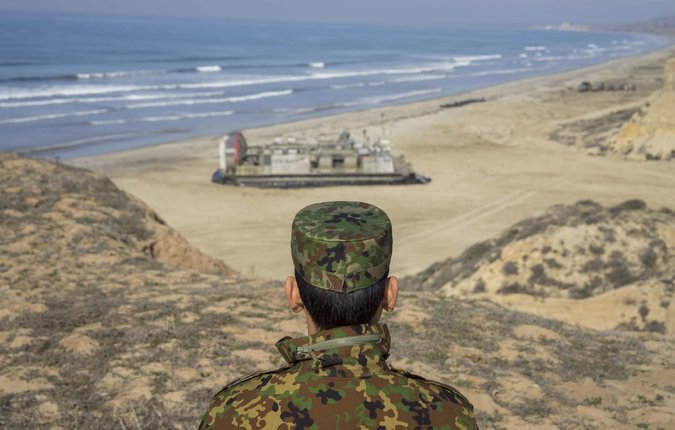(Photo Credit: Joe Klamar/Agence France-Presse — Getty Images)
(BGF) – BGF would like to introduce you to an article recently written by Helene Cooper which appeared in the New York Times on Saturday, February 22, 2014. The article discusses a recent, month-long U.S.-Japanese joint military exercise which focused on a set of islands in the East China Sea (called the Senkaku Islands in Japan and the Diaoyu Islands in China) that have been at the center of a territorial dispute between China and Japan. Click on this link (http://www.nytimes.com/2014/02/23/world/asia/in-japans-drill-with-the-us-a-message-for-beijing.html?hp&_r=1) to read the full article.
In Japan’s Drill With the U.S., a Message for Beijing
By Helene Cooper
CAMP PENDLETON, Calif. — In the early morning along a barren stretch of beach here last week, Japanese soldiers and American Marines practiced how to invade and retake an island captured by hostile forces.
Memo to Beijing: Be forewarned.
One Marine sergeant yelled for his men, guns drawn, to push into the right building as they climbed through the window of an empty house meant to simulate a seaside dwelling. The Marines had poured out of four amphibious assault vehicles as another group of smaller inflatable boats carrying soldiers of Japan’s Western Army Infantry Regiment landed in an accompanying beachhead assault.
There were shouts in Japanese. There were shouts in Marine English. There was air support, from Huey and Cobra helicopters hovering above. Then larger Navy hovercrafts roared in, spitting up a spray of seawater before burping out Humvees and more Japanese troops, their faces blackened with camouflage paint.
American military officials, viewing the cooperative action of the former World War II enemies from a nearby hillside, insisted that the annual exercise, called Iron Fist, had nothing, nothing to do with last fall’s game of chicken between Tokyo and Beijing over islands that are largely piles of rocks in the East China Sea. But Lt. Col. John O’Neal, commander of the 15th Marine Expeditionary Unit, said that this year, the Japanese team came with “a new sense of purpose.”
“There are certainly current events that have added emphasis to this exercise,” he said, as Japanese soldiers made their way up into the rocks before disappearing into the hills above the beach. “Is there a heightened awareness? Yes.”
In the United States military, commanders are increasingly allied in alarm with Japan over China’s flexing of military muscle. Capt. James Fanell, director of intelligence and information operations with the United States Pacific Fleet, recently said in San Diego that China was training its forces to be capable of carrying out a “short, sharp” war with Japan in the East China Sea.
In a sign of continuing concern, Gen. Ray Odierno, the Army chief of staff, was in China over the weekend seeking to improve the limited relationship between the American and Chinese militaries, perhaps through exchanges of top officers. In recent years, the Pentagon has worried about the buildup of China’s military and a lack of transparency among its leaders.
The islands at the center of the dispute, known as the Senkaku in Japanese and the Diaoyu in Chinese, are a seven-hour boat ride from Japan, even farther from China, and thought to be surrounded by man-eating sharks. Japan has long administered the islands, but they are claimed by China and Taiwan.
Last year, China set off a trans-Pacific uproar when it declared that an “air defense identification zone” gave it the right to identify and possibly take military action against aircraft near the islands. Japan refused to recognize China’s claim, and the United States defied China by sending military planes into the zone unannounced — even as the Obama administration advised American commercial airlines to comply with China’s demand and notify Beijing in advance of flights through the area.
To continue reading: http://www.nytimes.com/2014/02/23/world/asia/in-japans-drill-with-the-us-a-message-for-beijing.html?hp&_r=1
